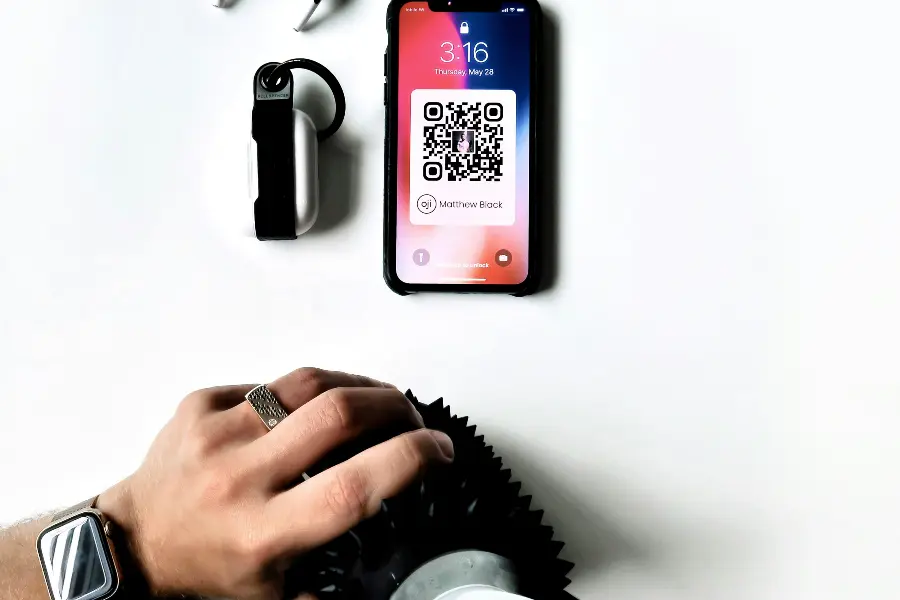Augmented Reality (AR) and QR Codes: The Next Frontier
Published on

Beyond the Screen: Bringing Digital Content into the Real World
For years, QR codes have served as a brilliant bridge to the 2D world of the internet, taking us to websites, videos, and images. But a new, more powerful synergy is emerging that promises to create truly immersive experiences: the combination of Augmented Reality (AR) and QR codes. AR technology overlays digital information—like 3D models, animations, and interactive data—onto our view of the real world through our smartphone cameras. The QR code is becoming the perfect "trigger" to launch these AR experiences, creating a seamless transition from a simple scan to an interactive spectacle.
This is the next frontier of marketing, education, and entertainment. This guide will explore how AR and QR codes work together and the groundbreaking possibilities this combination unlocks.
What is Augmented Reality (AR)?
Augmented Reality enhances our perception of the real world by adding computer-generated elements to it. Unlike Virtual Reality (VR), which creates a completely artificial environment, AR works with the user's existing surroundings. When you use an AR app on your phone, you are looking "through" your camera at the world, but with an added layer of digital information or graphics.
A popular example is the game Pokémon Go, where digital creatures appear in the real world through the phone's screen. Another is the IKEA Place app, which lets you see how a 3D model of a piece of furniture would look in your own room.
The QR Code as the Perfect AR "Trigger"
One of the challenges for AR has been how to initiate an experience. How does a brand tell a user where to point their phone to see an AR object? The QR code is the perfect solution. It acts as a physical marker or trigger in the real world.
The workflow is simple and increasingly common:
- A user sees a QR code on a product, a poster, or in a magazine.
- They scan the code with their smartphone camera.
- Instead of just opening a website, the scan initiates a WebAR experience directly in their mobile browser (no special app download required).
- The user is prompted to point their camera at a flat surface (like a floor or a table).
- A 3D model, animation, or interactive experience then appears, anchored to that real-world surface.
The QR code is the key that unlocks the AR content hidden in the physical object.
Game-Changing Use Cases for AR and QR Codes
1. Retail and E-commerce: "Try Before You Buy"
This is the most powerful commercial application. A QR code on a product page or in a catalog can allow a customer to visualize the product in their own home.
- Furniture: Scan a code to see if that sofa or lamp fits in your living room and matches your decor.
- Electronics: Scan to see a full-size 3D model of a new TV on your wall to check its dimensions.
- Fashion: Some advanced applications allow for virtual "try-on" experiences for things like sneakers or watches.
2. Marketing and Advertising: Bringing Print to Life
An AR QR code can make a static print ad unforgettable.
- On a wine bottle: Scan the label to have the bottle come to life with an animated story about the vineyard.
- On a movie poster: Scan the poster to have a 3D character from the movie appear and play a short animation.
- In a magazine ad: Scan to see a car materialize in 3D, allowing you to walk around it and view it from all angles.
3. Education and Training
AR can make abstract concepts tangible and easy to understand.
- In a textbook: Scan a QR code next to a diagram of a human heart to see a medically accurate, beating 3D model.
- In a museum: Scan a code next to dinosaur bones to see a full-size, animated dinosaur appear in the exhibit hall.
- For technical training: A mechanic could scan a code on an engine part to see an animated overlay showing how to correctly assemble or repair it.
The Rise of WebAR and App Clips
Historically, AR required users to download a dedicated mobile app for each experience. This was a major barrier. The development of WebAR has changed the game. WebAR allows for augmented reality experiences to run directly in a mobile web browser, like Chrome or Safari. This means a QR code can launch an AR experience with no app installation required, making it frictionless for the user.
Similarly, Apple's App Clips and Google's Instant Apps allow a user to access a small part of an app's functionality without downloading the full app, another perfect use case for QR code triggers.
Conclusion: A New Dimension of Interaction
The partnership between Augmented Reality (AR) and QR codes represents the next great leap in how we interact with information. It is moving us beyond simply viewing digital content to actively placing it within our own reality. The QR code serves as the simple, universal, and cost-effective key to unlock these powerful immersive experiences. As this technology becomes more refined and accessible, we can expect to see it transform how we shop, learn, and engage with the brands and stories around us.
The future isn't just about linking to information; it's about bringing it to life. And it all starts with a simple scan. To get started with the foundation, you can create your standard QR codes at QRDesigner.com.
